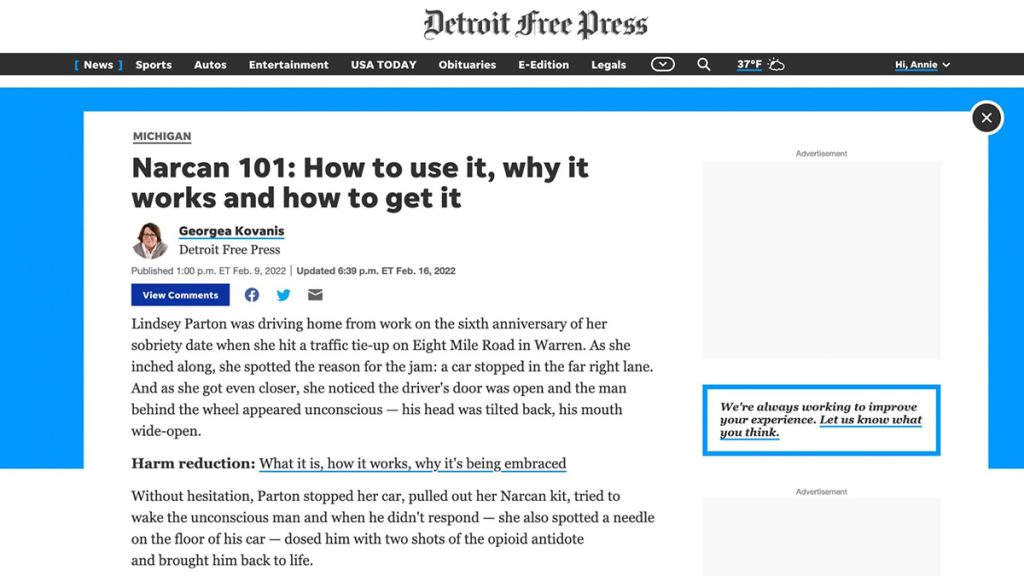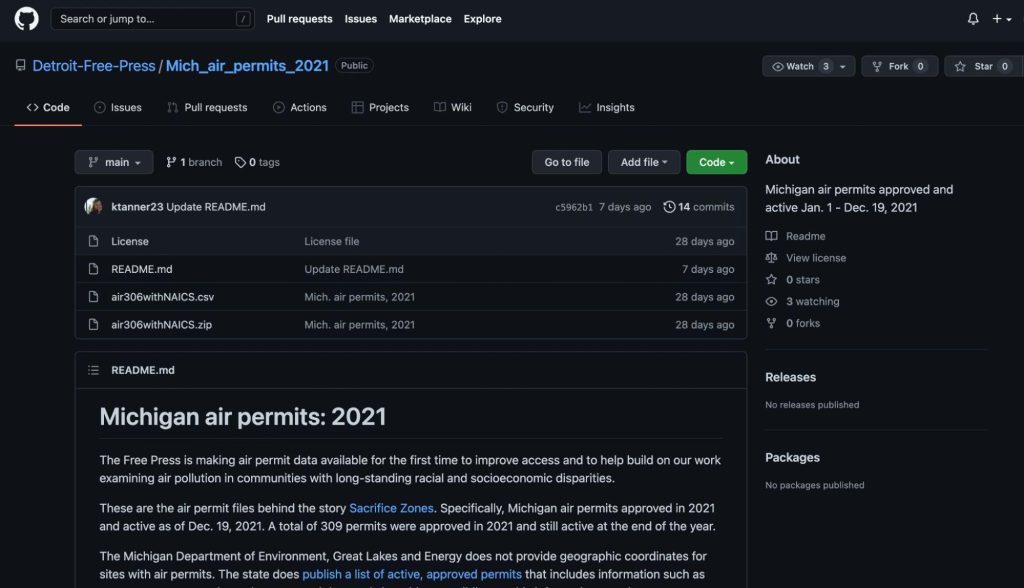
Opioid beat reporter Georgea Kovanis wrote an article published Feb. 9 about Narcan, a medicine that reverses an opioid overdose.
How to produce and measure impact on your journalism
It is about tracking a wide variety of aspects from story pitch to execution to promotion, to make sure your stories can affect the communities they’re created in service to
I worked with the Detroit Free Press to apply methods that measure the impact of the journalism they are creating, we called this impact production.
In my time with them, I learned the methods to effectively measure impact are endless, which means they are also always shifting depending on the story or package. Impact measurements may come in the form of researching agencies to promote specific news stories to creating a focused email list that promotes a newly created public dataset that affects everyone on that list or goes to people who could help the people who make up that dataset.
This is an overview of my experience in impact production to provide examples and general tips for your newsroom to start this important work.
Narcan training
The first project impact production I worked on for the Detroit Free Press was for a piece on frequently asked questions about Narcan. Opioid beat writer Georgea Kovanis wrote a harm reduction story in late January and she received feedback from readers wanting to learn more about what they could do to help the family in the story, which prompted the most recent piece about how to use Narcan.
Narcan, which has the generic name of naloxone, is a medicine that reverses an opioid overdose. Our strategies for impact production before publishing this story included researching SEO tactics and reaching out to some of the organizations and resources listed in Kovanis’ article. The SEO tactics were fundamental, but we wanted to find out whether it was better to use Narcan versus naloxone to better answer questions.
Surprisingly, naloxone was more popular during the research period on Google trends, however, more posts were found on Facebook and Instagram that used Narcan. From this, we chose to use Narcan in headlines.
I also spent time reaching out to the resources in the article. The first round of outreach was asking the organizations to post and promote this article in a method of their choosing. By doing so, we explored different ways to get the information in the article to audiences other than the direct Detroit Free Press audience.
The second round was asking the organizations listed if they were able to provide data on Narcan training. Since the nature of these organizations listed in the article was to provide resources for people to receive training on how to use Narcan, it would be beneficial to measure impact by looking at training numbers at these organizations in the months following the publishing of the article. Did they go up or did they stay the same?
Since this project was completed this past month, we don’t have all the results yet to follow up on. Some things the Free Press will be measuring in the future outside of data include individual stories to follow up on from people who may have used this coverage to save a life. While data on Narcan training cannot show causation, personal stories can be used months into the future to help them measure impact.

Michigan air permits data
I also worked on a project about Michigan air pollution permit data from 2021, created by Kristi Tanner of the Detroit Free Press. The Free Press made this data publicly available for the first time in early February. This project was different from others because it involved a dataset on GitHub instead of a story.
For the first part of this project, we decided to first identify people and organizations who could benefit from this dataset to send an email to announce the availability of the data. I identified over 60 places by opening up the actual dataset and researching individual locations of air permits as well as statewide organizations. These included nonprofits, advocacy groups, individuals and media organizations.

We also created a survey link on GitHub and sent an email to all of the organizations. The survey goal was to ask those who choose to use the data what they are using it for, essentially getting numerical values for data usage. This also allowed for the control of people actually using versus only downloading or cloning the data.
You can view the survey here: https://forms.gle/W6tBtcjHhPanVjMe9.
The second stage of measuring impact on this story included reaching out to communities and hosting training sessions to equip members with information they need about air permits. This part is ongoing, but my role in this included brainstorming outreach actions, which could be social media or flyers, as well as measuring impact through training surveys before, after and 6 months after to gauge how training attendees used information.
Tips for impact producing in your newsroom

Think about the goal of the story when brainstorming ways to produce and measure impact
What issue is the story trying to create awareness or change around? Who is the goal audience? What are the key stakeholders in the package? Who is impacted by the issue of the story? Who can make change / decisions based on your story for the betterment of all?

Think about ways to measure impact in a numerical value.
Often there are ways to measure impact in a data that can be a good resource by providing specific numbers that show change, or to compare to other projects – whether it is search terms that increased, trainings that your community sought out, these topics being brought up at city council or drafted into changes in laws etc.

Come up with strategies for before, during and after publication of the story.
You need time ahead of the story’s publication to plan. You should be executing tactics and measuring impact prior to, during and after publication. For advocacy groups and nonprofits, give yourself ample time to make calls if you don’t have a connection there already. I sometimes spoke to several people before connecting with the right person.

The opportunities to impact produce are endless. Think big.
I utilized social media, SEO, training, data, surveys and mass email lists to impact produce. Another upcoming piece at the Detroit Free Press includes actually holding training sessions for the community to equip people with means to contribute to the conversation.
